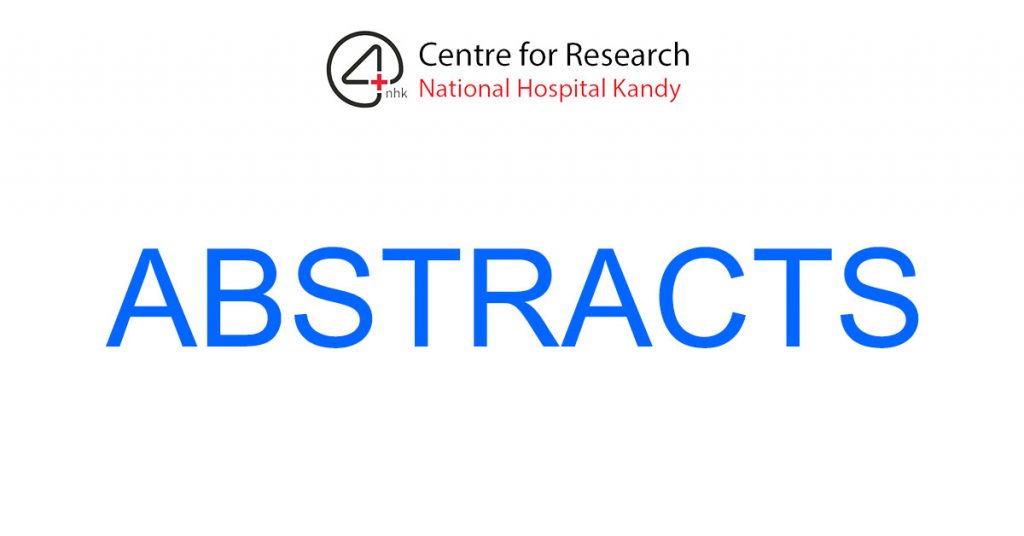Buddhi N. T. W. Fernando1, Thilini S. H. Sudeshika2, Thilini W. Hettiarachchi3, Zeid Badurdeen3, Thilak D. J. Abeysekara3, Hemalika T. K. Abeysundara4, Sakunthala Jayasinghe5, Shirani Ranasighe6, Nishantha Nanayakkara7
1 Department of Medical Laboratory Science, Faculty of Allied Health Sciences, University of Ruhuna,
Matara, Sri Lanka, 2 Department of Pharmacy, Faculty of Allied Health Sciences, University of Peradeniya,
Peradeniya, Sri Lanka, 3 Faculty of Medicine, Centre for Education, Research and Training on Kidney
Diseases (CERTKiD), University of Peradeniya, Peradeniya, Sri Lanka, 4 Department of Statistics and
Computer Science, Faculty of Science, University of Peradeniya, Peradeniya, Sri Lanka, 5 Department of
Pathology, Faculty of Medicine, University of Peradeniya, Peradeniya, Sri Lanka, 6 Department of
Biochemistry, Faculty of Medicine, University of Peradeniya, Peradeniya, Sri Lanka, 7 Transplant and
Dialysis Unit, Teaching Hospital, Kandy, Sri Lanka
Abstract
Chronic Kidney Disease of uncertain etiology (CKDu) is an endemic, disease that mostly
affects young agricultural workers in the rural dry zone of Sri Lanka. This study was
designed to identify specific biochemical manifestations of CKDu cases. All (119) nondialysis definite CKDu patients in Girandurukotte and Wilgamuwa were selected. Blood
and urine samples were collected and measured biochemical parameters. All analyses
were performed in IBM SPSS statistics version 23 (IBM Corp, USA). The median
blood pressure was normal though nearly half of the patients (45.4%) who were in the
advanced stages (Stage 3b, 4 and 5) of CKDu. Patients without a history of hypertension
before the diagnosis of CKDu (100%) and minimal proteinuria (26%) are similar to the
previous findings. Patients without a history of diabetes before the CKDu diagnosis had
high percentages of diabetes (15.7%) and pre-diabetes (59.8%) and hence indicated the
possibility of uremia induced impaired glucose intolerance in the rural areas of the country. There were 62.2% patients who had low vitamin D and only a minority had evidence
of bone mineral diseases. Out of liver disease markers serum glutamic pyruvic transaminases (SGPT), serum glutamic oxaloacetic transaminases (SGOT), gamma-glutamyl
transferase (GGT), and Lactic acid degydrogenase (LDH) had an inverse correlation
with the advancement of the disease indicating subclinical liver disease. Osmolality in
serum and urine showed a discrepancy despite > 50% of CKDu patients had increased
their serum osmolality. The current study supports most of the previously described
manifestations of CKDu. Moreover, some specific patterns have been identified which
need to be validated in a larger group.
More Details: https://www.ncbi.nlm.nih.gov/pmc/articles/PMC7197770/
![]()

